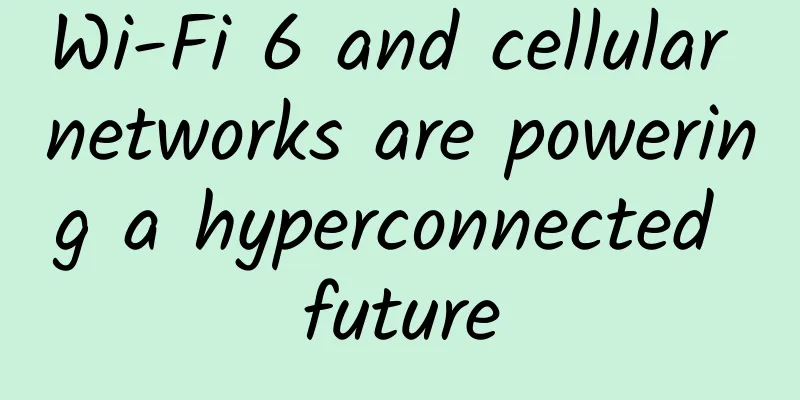Wi-Fi 6 and cellular networks are powering a hyperconnected future

|
Wi-Fi 6 is maturing into a new role as a complement to LTE-M and 5G connectivity, according to a new white paper from Quectel Wireless Solutions. The new paper, titled "Why Wi-Fi 6 and Cellular Networks Work Together to Enable a Hyperconnected Enterprise Future," reveals that Wi-Fi is currently used in indoor applications such as stadiums, large venues, offices and hotels, and is also used outdoors in the automotive industry to enable monitoring, maintenance and infotainment, making vehicle functions more personalized. The paper also revealed that Wi-Fi 6 has already dominated Wi-Fi shipments. Research firm IDC predicts that in the next two years, the technology will account for 79% of all Wi-Fi device shipments, and by 2022, more than 3.5 billion Wi-Fi 6 devices will be shipped capable of supporting 6GHz. The new paper features further market forecasts and provides a history of the technology. In addition, it reveals popular use cases driving the adoption of Wi-Fi 6. Wi-Fi 6 can provide high data rates, low latency, and high network density, which obviously brings many benefits to dedicated networks. For example, use cases such as video applications require high throughput, industrial control requires low latency, and smart homes require a large number of fixed device connections. However, this is not enough to meet all types of applications, such as applications with high mobility requirements, such as POS devices, or applications that require very long-distance communication. For applications such as outdoor IP cameras, the Wi-Fi range may not be enough. Industry 4.0, smart manufacturing, connected cars, and infotainment industries are all looking to leverage Wi-Fi 6 and 5G as complementary technologies. Therefore, it is important to evaluate both technologies together and recognize that each has compelling features to bring to the enterprise. For example, municipalities have already adopted a combination of Wi-Fi 6 and 5G to power smart city solutions such as real-time traffic monitoring and geo-fencing applications that can send personalized alerts to anyone within a predetermined geographic area. In addition, applications that leverage Wi-Fi 6 and cellular connectivity are becoming increasingly popular in the healthcare, retail, and sports sectors. Quectel sees a multitude of applications in the automotive market. Wi-Fi 6 features access points designed to support Gigabit in-vehicle hotspots and provide efficient Wi-Fi connectivity throughout the vehicle, supporting UHD (Ultra High Definition) video streaming on multiple displays, screen mirroring for compatible devices, and wireless backup cameras. It also features full MIMO client capabilities and is designed to extend range at high data rates to connect to external access points for automotive services such as vehicle diagnostics, software updates, and automatic check-in upon arrival at the dealership. Additionally, the technology will provide better connectivity and an enhanced in-car experience. As vehicle connectivity continues to evolve from 4G to 5G, Wi-Fi 6 is an integral part of the connectivity evolution as it enables seamless connectivity across multiple devices in congested environments. In early 2021, Quectel announced a new range of Wi-Fi 6 modules, including the industrial-grade FC6X series based on Qualcomm's QCA206x Wi-Fi 6 chip, which is designed to provide a faster, more secure, and more robust Wi-Fi experience as well as new Bluetooth audio features. The company also launched the automotive-grade AF50T module based on Qualcomm's automotive Wi-Fi 6 chip QCA6696. The two module series are designed to improve performance in terms of capacity, data rate, latency, power consumption and coverage. They bring excellent wireless performance to a variety of consumer, industrial and automotive applications such as smart home, MiFi, smart TV, OTT devices, industrial control, customer premises equipment (CPE), connected car, etc. When combined with Quectel's 5G modules, the Wi-Fi 6 module series provides an excellent 5G and Wi-Fi 8 solution for MiFi and CPE, designed to ensure high-speed connections, support up to 32 clients at a time, and ensure smoother and more reliable connections for smart home gadgets and many other multi-user scenarios. It also reduces network congestion in complex indoor scenarios such as smart homes, shopping malls, schools, and factories. In addition, the FC6X series greatly improves the security of Wi-Fi connections by utilizing WPA3 encryption mode. |
Recommend
The turning point has arrived, and operators will face major changes in 2019
According to the financial report, China Telecom&...
How to calculate 5G backhaul bandwidth?
[[353172]] This article is reprinted from the WeC...
Are you still worried about the slow WiFi? There are five pitfalls behind it
The Internet of Everything makes network communic...
Is SD-WAN dead? The answer is of course no
At first glance, everyone must be shocked by thi...
The operating data of the three major operators in January was released: China Telecom’s 5G users are about to exceed 100 million
[[383106]] In a blink of an eye, the Spring Festi...
Huawei redefines data infrastructure. Here are the answers to five questions that the industry should be concerned about!
[51CTO.com original article] On May 15, Huawei re...
Interviewer, I implemented a Chrome Devtools
[[426371]] Web pages will load resources, run JS,...
Three years after the license was issued, has 5G commercialization been successful?
It coincides with the third anniversary of China...
How to build a universal smart IoT gateway by reducing the data sampling rate
【51CTO.com Quick Translation】Although there are m...
RAKsmart: 30% off on all VPS, VPS hosting in Hong Kong/Japan/Los Angeles/San Jose starting from $1.99/month
RAKsmart's December year-end promotion has be...
5G network construction 80%: 5G robots are about to usher in a new turning point
Recently, according to CCTV News, China had compl...
RepriseHosting: $28.54/month-L5640/16G memory/240G SSD+8TB HDD/1Gbps bandwidth/Seattle data center
RepriseHosting recently launched a limited-editio...
Huawei's 3GPP 5G pre-commercial system wins the World Internet Leading Technology Achievement Award
[Wuzhen, China, December 3, 2017] Recently, the w...
HostXen: US/Japan/Hong Kong VPS 6GB memory from 70 yuan/month, new users register to get 20 yuan
HostXen is a domestic hosting company founded in ...
AT&T 5G is powering 'massive' enterprise IoT
US-based telecom operators have been working on h...









